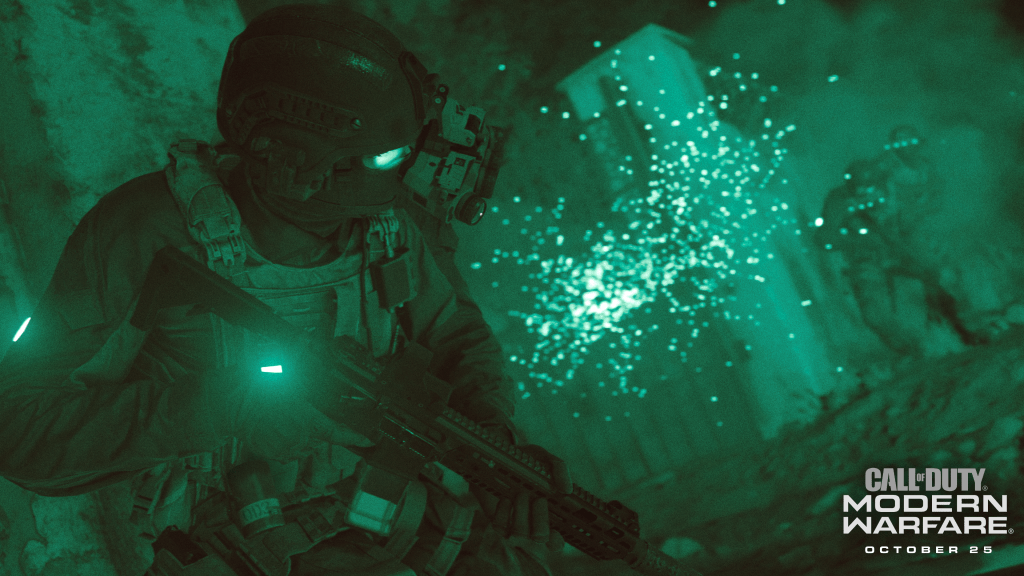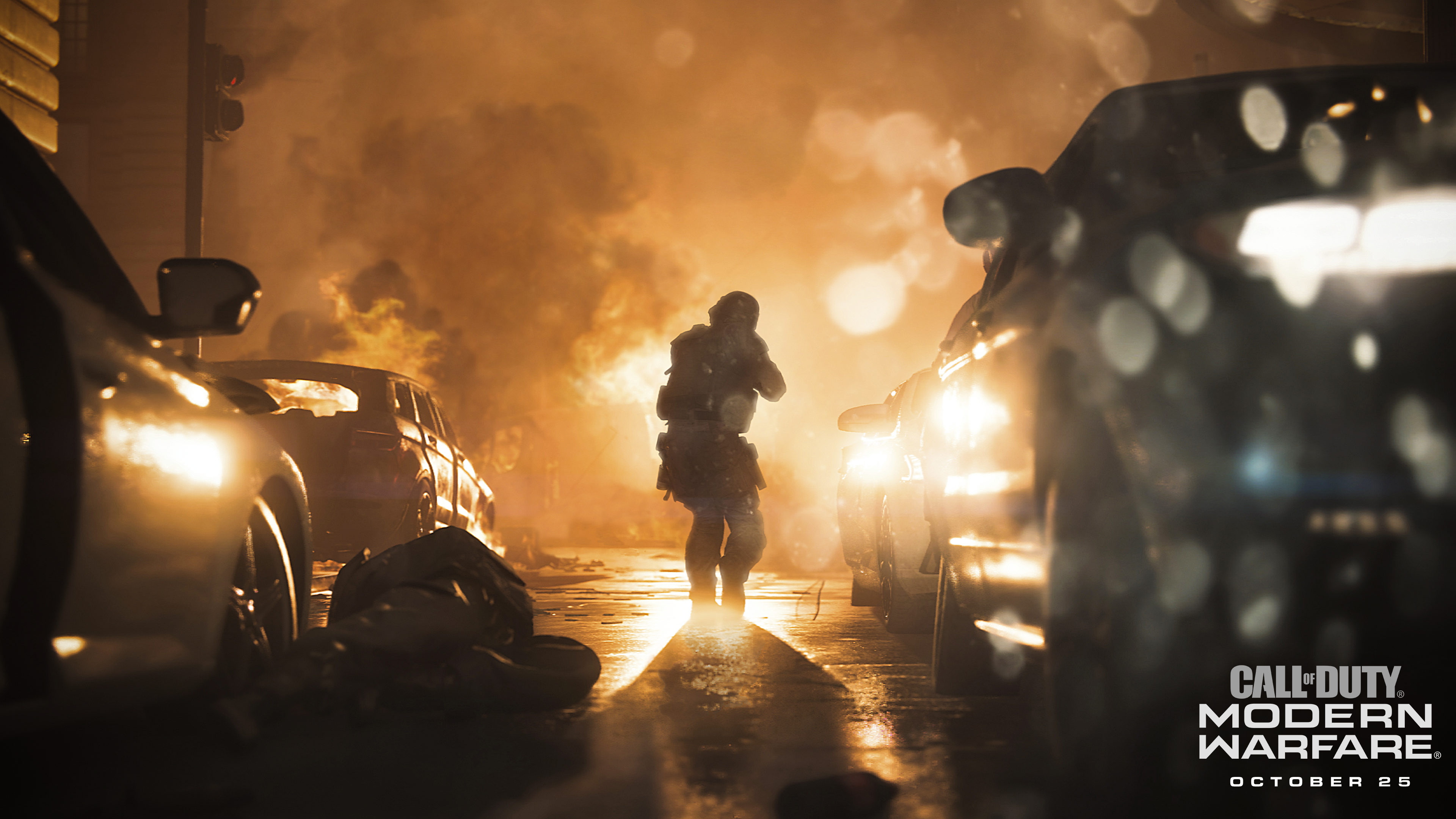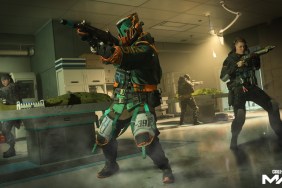The latest entry in the Call of Duty franchise was revealed last week, with Infinity Ward showing off its soft reboot of the Modern Warfare subseries. While people are excited about where Infinity Ward may take this one creatively, it also marks a whole new engine with some very impressive rendering technology to make it look more realistic than it ever has before. We had a chance to go check out the new tech at Infinity Ward ourselves and while we came away thoroughly impressed with what we’d seen, I thought we’d toss it to the experts to verify that it all stacks up.
Digital Foundry also had a chance to visit Infinity Ward and gave their expert technical analysis of the reveal trailer and campaign content that was shown at the studio. They confirmed that everything you see in the trailer is running in real time on a PS4 Pro. It’s not pre-rendered. It’s not even “in-engine” footage (which can be deceiving in and of itself), but actual realtime gameplay. “What you see is what you’ll get,” says Digital Foundry’s Rich Leadbetter.
He goes on to say that this is “a new milestone” for the franchise, and coming from the tech experts, that’s saying quite a lot. He talks about photogrammetry, going into more details about how this process reproduces physical objects and their material properties. It’s a physical-based rendering system, so that means that these values are applied to the objects themselves, and not achieved through other tricks or methods.
At this point, the video slows down to 25% speed to show off some of the finer details, such as lighting playing over duct tape on a helmet, and the helmet itself, with every bit of the texture defined to the smallest cracks and bumps. Next, Leadbetter confirms that the engine is capable of rendering more than five times the number of triangles as previous games, showing one scene featuring a teeming crowd of people that is reportedly more than eight million triangles. Again, he reminds the viewer that the shot is running in real time in the game, not pre-rendered CGI or “in-engine” magic, which makes its fidelity and triangle count all the more impressive. He says that tessellation allows increased fidelity without artifacts normally present under these circumstances, most notably on close inspection of the object.
Next up is lighting. Every light source in the game is volumetric, and Infinity Ward can actually adjust the density of the atmosphere, simulating dust, humidity, or fog. In most games, god rays—though impressive—are handled via post-processing. Not so here. God rays are “actual results of accurately rendering volumetric lights beaming through geometry.” Sufficient atmospheric density can present a reflection effect (Leadbetter brings up the example of highbeam headlights used in dense fog). Colored lighting that crosses path with other light will blend realistically. Lighting levels of various skyboxes were sampled from actual locations in order to get them as accurate as possible.
Spectral rendering is a new feature that renders even non-visible spectrums of light in real time, including infrared for night vision and thermal vision. The trailer gives a good long look at the hyper-realistic night vision, something we talked about in our own preview of the tech, and Leadbetter takes some time to talk about the thermal sensors in more detail.
Digital Foundry also confirms that all of these features are “baked in at the lowest level,” which means these aren’t options for higher powered systems. Because the technical aspects of the game actually have gameplay ramifications, not just aesthetic effects, things like the lighting will be common across the lowest version of the game.
Here, the video shows off a scene from Infinite Warfare, Infinity Ward’s last Call of Duty game from 2016, and it’s clear just how far the tech has come, even if Infinite Warfare put on a pretty impressive face at the time.
Leadbetter says that the future of this tech is the future of the Call of Duty franchise, and that it will be shared across studios, mentioning both Sledgehammer and Raven as development teams that will receive access to the tech. It’s unclear if he purposefully left Treyarch out of that picture, or if it was just a benign oversight.
Finally, Leadbetter ends the video with Digital Foundry’s classic frame rate analysis, and gives some insight into how Infinity Ward optimizes its games. The studio saves major optimization efforts until the end of development, meaning that what we’re seeing isn’t optimized, and yet most of the trailer is hitting a solid 60 fps. They do optimize singular heavy pieces of content from the game during the development process, which ensures that the optimization at the end is basically just the “easy stuff” as the perform the major optimization across all of the content.
There are nightly performance analysis checks that happen automatically across all of the content of the game, which gives them a “historical record” and helps the team to identify what may have caused a performance issue to occur. Digital Foundry notes that there is a performance dip or two in the trailer itself, but that they were able to go hands on with one of the missions shown in the trailer and they did not detect the same issue. It could be that the reveal trailer was prepared on an older build, and that the current playable state is better optimized. The game is also currently still in pre-alpha, so there’s plenty of time to lock in optimizations before the October 25th launch date.
[Source: Digital Foundry]









